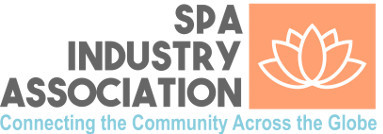
| The laws are changing rapidly in the current pandemic/crisis. Therefore, the legal issues discussed here are subject to constant change. It is best to consult with your counselconcerning any specific legal advice you may have. Businesses are rushing to take advantage of the assistance provided by the CARES Act. While many have already submitted applications for PPP loans, others are wondering if they are eligible for the loan. SBA’s most recent guidance (found here) contains valuable insight into the PPP loan program and clarifies a few important questions. If my business employs over 500 employees, can I qualify for a PPP loan? While companies with 500 or fewer employees are qualified for the PPP loans, those who have over 500 employees are not automatically disqualified. Companies that fall within an employee or revenue threshold set by the SBA for their industry are also considered small businesses and qualify to apply for PPP loans. Additionally, companies that meet the SBA’s “alternative size standard” based on their tangible net worth (not more than $15,000,000) and net income (not more than $5,000,000), qualify as small businesses and therefore are eligible for PPP loans. Also, the most recent guidance states that a business can be eligible, “if the business has 500 or fewer employees whose principal place of residence is in the United States.” Businesses that employ more than 500 employees, therefore, should carefully examine if there is another basis for to qualify for the PPP loans. If my business qualifies for a loan, when will I receive it? The SBA has stated that a lender must make the first disbursement of the loan to the borrower no later than ten (10) calendar days after it approves the loan. Given the volume of the applications being received, we will need to see if lenders can comply with the SBA’s mandate. What goes into payroll costs? How do I account for independent contractors? Payroll costs under the PPP are used both to determine the total loan amount, as well as the amount of the loan that may ultimately be forgiven. Thus, determining amounts a company spends on payroll and other covered costs are vital for PPP applicants. Payroll costs include the gross monetary compensation paid to each employee (up to a max of $100,000), plus payments made by an employer for retirement funds, health insurance premiums, as well as state and local taxes paid by the company on employee compensation. Payroll costs, however, do not include payments to independent contractors. Independent contractors can apply for PPP loans themselves, and a business thus cannot include payments to them in its payroll costs. When does the eight-week period begin for purposes of determining the amount forgiven on my loan? As a reminder, the potential amount of the total loan eligible to be forgiven is equal to the amount spent on covered costs during the eight-week period from the date of the loan origination. SBA clarified that the date the lender first disburses the PPP loan to the business is considered the date of the loan origination. The eight-week period therefore begins on the date of the first loan disbursement. How do I know what amount of my PPP loan will be forgiven? The exact amount is impossible to determine with certainty until you complete the eight-week period and apply for the loan forgiveness. There are, however, some general guidelines. First, the amount forgiven cannot be more than the original loan. Also, at least 75% of the amount a business seeks to have forgiven must be spent on payroll costs. The potential forgiveness amount may also be reduced by the reduction of the number of full-time employee-equivalents employed by a business during the eight-week period, versus the applicable comparison period (either February 15, 2019 to June 30, 2019 or January 1, 2020 to February 29, 2020 usually selected at the borrower’s discretion). Additionally, for employees making less than $100,000 per year, if their compensation is more than 25% lower during the eight-week period than the employees’ normal compensation, the excess reduction in pay will be deducted from the amount that can be forgiven. The law does potentially allow borrowers to cure some of the reductions mentioned above by June 30, 2020, but it is still unclear as to what the specific requirements will be to cure these deficiencies and maximize the amount of the loan that is forgiven. There is still more clarity (hopefully) to come. While the guidance by the SBA clears up some issues, there will still be many considerations that impact what borrowers decide to do when they receive their PPP loans. Should they immediately hire all laid off workers back? Should they restore employee’s compensation back to the pre-pandemic levels?Decision on such issues will depend on the borrower’s intent for the loan. Is the business concerned mostly with maximizing forgiveness, or is the business taking out the loan to provide security against an uncertain future? Is there a specific portion of the PPP loan that a business wants to target for forgiveness? Depending on the answer to these questions and the anticipated impact of this pandemic on a business, each borrower will need to determine the use of the PPP loans that best meets its needs.Stayed tuned as we will keep updating you on developments. If you need to discuss the options for your business, please reach out to us. |
| For additional articles on related topics please go toEmployment Law and the Current COVID-19 Crisis. |



